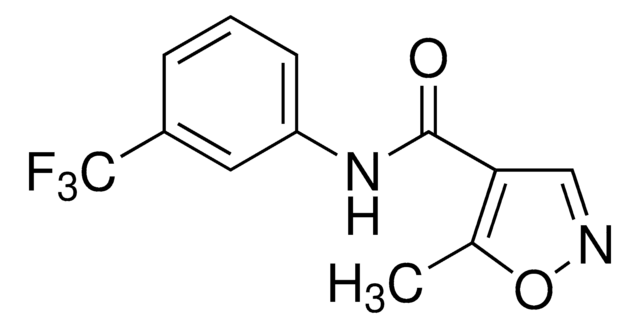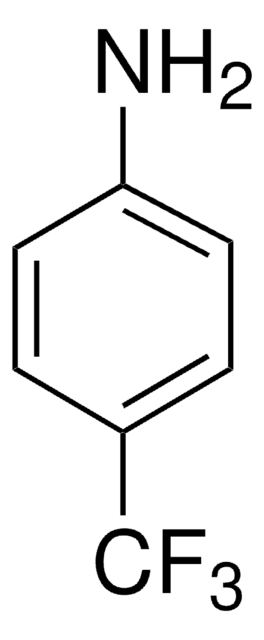1357056
USP
Leflunomide Related Compound B
United States Pharmacopeia (USP) Reference Standard
Sinónimos:
2-Cyano-3-hydroxy-N-(4-trifluoromethylphenyl)crotonamide
About This Item
Productos recomendados
grado
pharmaceutical primary standard
familia API
leflunomide
fabricante / nombre comercial
USP
aplicaciones
pharmaceutical (small molecule)
formato
neat
cadena SMILES
O=C(/C(C#N)=C(O)/C)NC1=CC=C(C(F)(F)F)C=C1
InChI
1S/C12H9F3N2O2/c1-7(18)10(6-16)11(19)17-9-4-2-8(3-5-9)12(13,14)15/h2-5,18H,1H3,(H,17,19)/b10-7-
Clave InChI
UTNUDOFZCWSZMS-YFHOEESVSA-N
Información sobre el gen
human ... DHODH(1723)
¿Está buscando productos similares? Visita Guía de comparación de productos
Descripción general
Nota de análisis
Otras notas
Producto relacionado
Certificados de análisis (COA)
Busque Certificados de análisis (COA) introduciendo el número de lote del producto. Los números de lote se encuentran en la etiqueta del producto después de las palabras «Lot» o «Batch»
¿Ya tiene este producto?
Encuentre la documentación para los productos que ha comprado recientemente en la Biblioteca de documentos.
Nuestro equipo de científicos tiene experiencia en todas las áreas de investigación: Ciencias de la vida, Ciencia de los materiales, Síntesis química, Cromatografía, Analítica y muchas otras.
Póngase en contacto con el Servicio técnico





